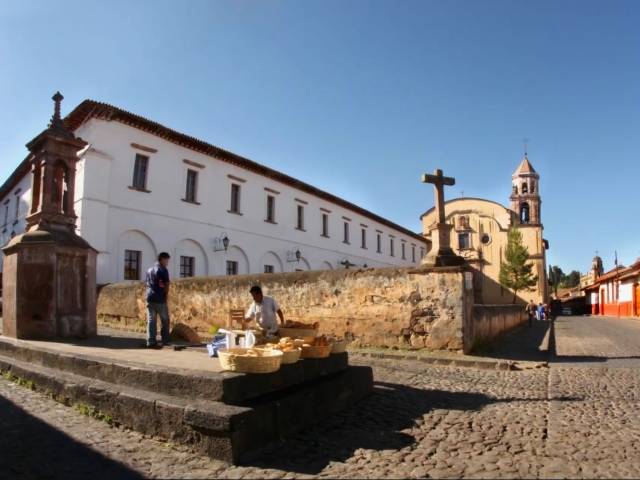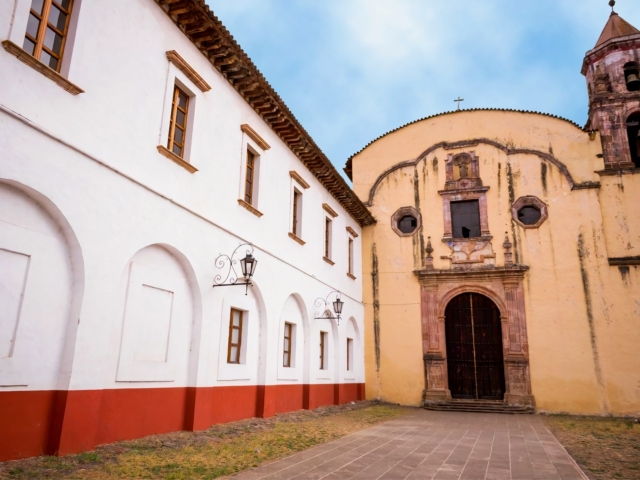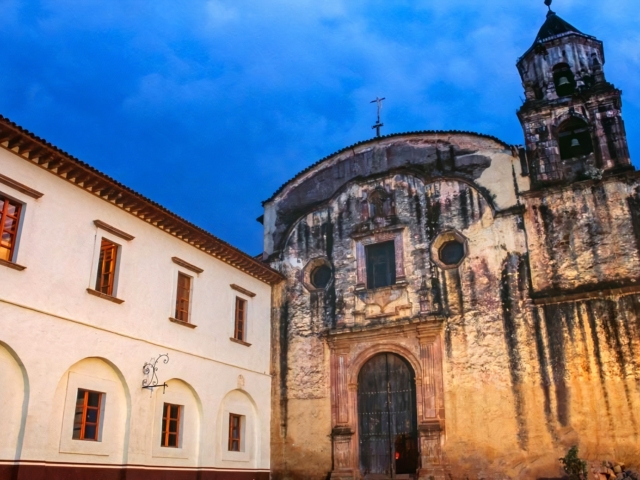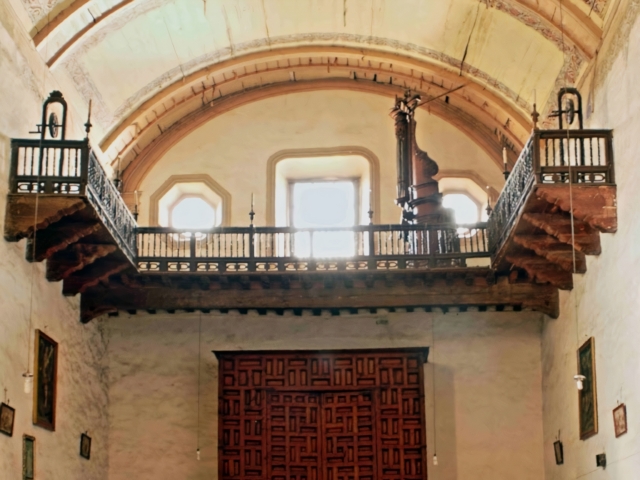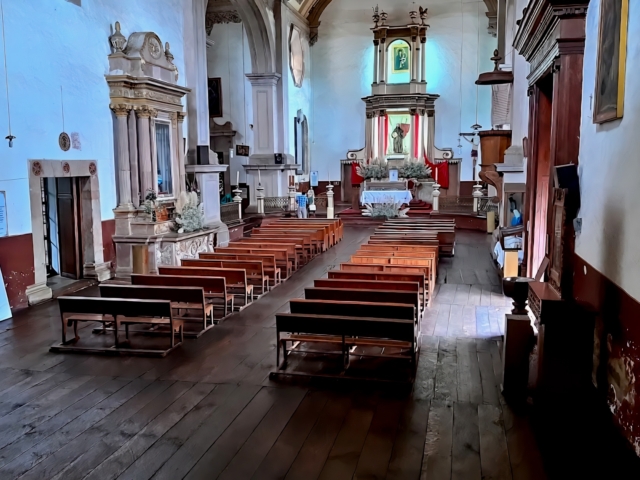
Adress
Enseñanza s/n, Colimillas, 61600 Pátzcuaro, Michoacan, México.
GPS
19.512813619617, -101.60747408867
Phone
KNOW MORE PLACES
VISITA OTRAS LOCALIDADES
The Jesuits or the Society of Jesus was established in Pátzcuaro in 1574 in response to several requests and later expelled due to various conflicts with the crown. This temple is a physical part (no longer operational) of what is now the Former Jesuit College. Its patron is Saint Ignatius of Loyola.
This temple is a sober and traditional construction of the XVI century of “Latin plant”, that is to say it consists of a single barrel vault with two lateral areas that form the Latin cross and that reminds in a certain way the fortifications to the style of the existing renaissance in Spain, but in this case applying the use of materials of the region like adobe and wood and also introducing the clay tiles.
The level of the floor of this temple is not the original one, since during the XIX century its height was raised as a fashion, for which a slight fall is observed in the tower and in the lateral door of the church a displacement is noticed due to the great weight that they support.
It keeps an important picture gallery composed of several Passion Archangels - so called because their motifs include elements of the Passion of Christ - attributed to the colonial painter Juan Miranda. In addition, a singular image of Santa María Mayor can be contemplated, which arrived at this site due to the great friendship that united Don Vasco de Quiroga and Francisco de Borja - then general of the Jesuits who was in Rome -, the second one asked permission to the pope to make reproductions of the image in question, of which four reproductions were made that arrived to America, of which one is in the Profesa in Mexico City, but mixed with another oil painting in which San Lucas appears as the official painter of the Virgin.
Two more were in Puebla and Oaxaca, but their whereabouts are unknown. Of all of them, the one in the best state of preservation is precisely in the temple of the Company.

